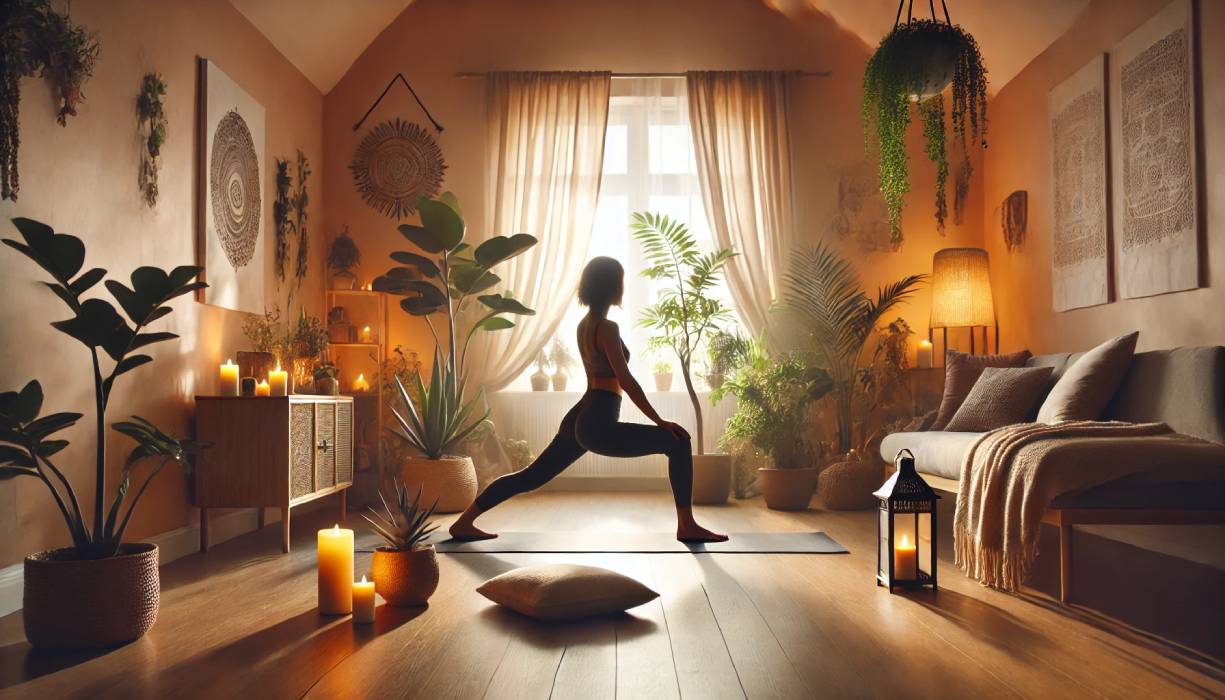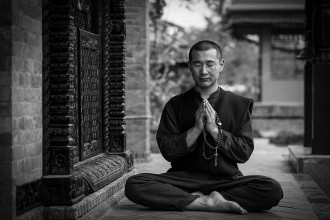Yoga is not just an exercise; it’s a lifestyle choice that promotes physical health, mental clarity, and emotional well-being. Whether you’re a seasoned yogi or a beginner, creating a daily yoga routine can enhance your strength, flexibility, and overall happiness. In this comprehensive guide, we’ll walk you through building a sustainable yoga practice that fits into your daily life and supports your wellness goals.
Why a Daily Yoga Routine is Essential for Your Health
Incorporating yoga into your daily life can offer a wide array of benefits. A consistent yoga practice, even for just a few minutes each day, can have a profound impact on your body and mind:
-
Improves Flexibility and Strength
Regular yoga practice helps increase flexibility by stretching muscles and promoting joint mobility. It also strengthens the core, improving posture and stability.
-
Reduces Stress and Anxiety
Yoga combines mindful breathing with movement, which helps activate the parasympathetic nervous system, calming the body and reducing stress levels.
-
Boosts Mental Clarity
Through mindful breathing and focused movement, yoga enhances mental clarity, improves concentration, and fosters a positive mindset.
-
Promotes Overall Well-Being
A consistent yoga practice can improve sleep quality, digestion, and boost energy levels, supporting a healthy lifestyle.
The key to success is making your yoga practice enjoyable and sustainable. Here’s how to build a yoga routine that fits your schedule.
Step 1: Set Your Yoga Intention
Before you begin your yoga practice, take a moment to reflect on why you want to incorporate yoga into your daily life. Is it for stress relief, better flexibility, or improved focus? Setting a clear intention can keep you motivated and help guide your practice.
Pro Tip: Write down your intention and place it somewhere you can see it daily, like on your yoga mat or bathroom mirror. This will act as a reminder to stay aligned with your goals.
Step 2: Start Small and Build Consistency
When building a daily yoga practice, consistency is more important than duration. Begin with shorter sessions and gradually increase the time as you develop the habit.
Sample Schedule for Beginners:
- Week 1-2: 10-15 minutes daily
- Week 3-4: 20-25 minutes daily
- Month 2 and Beyond: 30 minutes or longer
Step 3: Choose the Right Time for Your Yoga Practice
Choose a time of day that works best for you. Some people prefer morning yoga to boost energy and start the day positively, while others may opt for evening yoga to relax and unwind. Experiment with different times to see what feels most comfortable and sustainable.
- Morning Yoga: Energizes you and sets a positive tone for the day.
- Evening Yoga: Relieves the tension of the day and prepares you for a restful night.
Step 4: Create a Dedicated Yoga Space
Having a dedicated space for your practice makes it easier to stay committed. It doesn’t need to be large or fancy—just a quiet, comfortable area where you can focus and practice mindfulness.
Tips for Creating the Perfect Yoga Space:
- Add calming elements like candles, plants, or soft lighting.
- Keep your yoga mat, props, and water bottle nearby.
- Minimize distractions by turning off your phone or setting it to “Do Not Disturb.”
Step 5: Build a Balanced Yoga Sequence
A well-rounded yoga routine includes poses that target different muscle groups. Here’s an example of a simple yoga sequence that you can practice daily:
- Warm-Up (2-3 minutes): Gentle stretches or Cat-Cow poses to warm up the spine and muscles.
- Sun Salutations (5 minutes): A series of flowing poses to build heat and flexibility.
- Standing Poses (5 minutes): Poses like Warrior I, Warrior II, and Triangle Pose to strengthen the legs, arms, and core.
- Seated Poses (5 minutes): Forward folds, twists, or Butterfly Pose to stretch the hips and back.
- Cool-Down (3-5 minutes): Child’s Pose, Savasana (Corpse Pose), or a seated meditation to relax and restore your body.
Pro Tip: Use online yoga videos or apps to guide you until you feel confident creating your own sequences.
Step 6: Incorporate Breathwork and Mindfulness
Yoga is not just about physical postures; it’s also about mindfulness and breath. To deepen your practice, focus on your breath and cultivate awareness during each pose.
- Mindfulness: Stay present and observe the sensations in your body and breath.
- Pranayama (Breathwork): Try techniques like Ujjayi Breath (ocean breath) or Nadi Shodhana (alternate nostril breathing) to calm the mind and increase energy.
Step 7: Track Your Progress
Tracking your yoga practice helps maintain motivation and celebrate progress. Use a journal, calendar, or yoga app to note:
- The duration of your practice.
- The poses or sequences you focused on.
- How you felt before and after each session.
Bonus: Reflecting on your progress helps you identify patterns and adjust your practice as needed.
Step 8: Stay Flexible and Enjoy the Process
Life can be unpredictable, and some days you may not have time for a full practice—and that’s perfectly okay! Even a few minutes of stretching or deep breathing can make a big difference. The goal is to practice consistently, not perfectly.
Pro Tip: Keep your routine exciting by trying new poses, exploring different styles of yoga, or participating in virtual classes to stay inspired.
Sample 15-Minute Daily Yoga Routine for Beginners
If you’re looking for a quick and easy yoga session, here’s an example of a 15-minute routine you can follow:
- Warm-Up: Cat-Cow Stretch (2 minutes)
- Sun Salutations: 3 rounds (5 minutes)
- Standing Poses: Warrior I, Warrior II, Triangle Pose (5 minutes)
- Cool-Down: Child’s Pose and Savasana (3 minutes)
Final Thoughts: Start Your Yoga Journey Today
Building a daily yoga routine can significantly improve your physical and mental health. Remember, yoga is about consistency, not perfection. It’s about taking the time to honor your body, clear your mind, and nurture your well-being.
So, roll out your mat, take a deep breath, and embark on your yoga journey. Your healthier, happier life begins with just one pose at a time.


-1740046576.jpg)




-1741245072.png)

